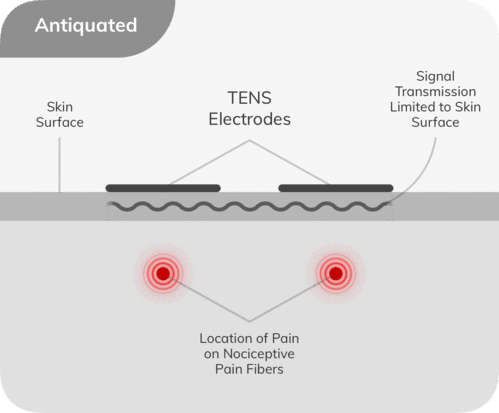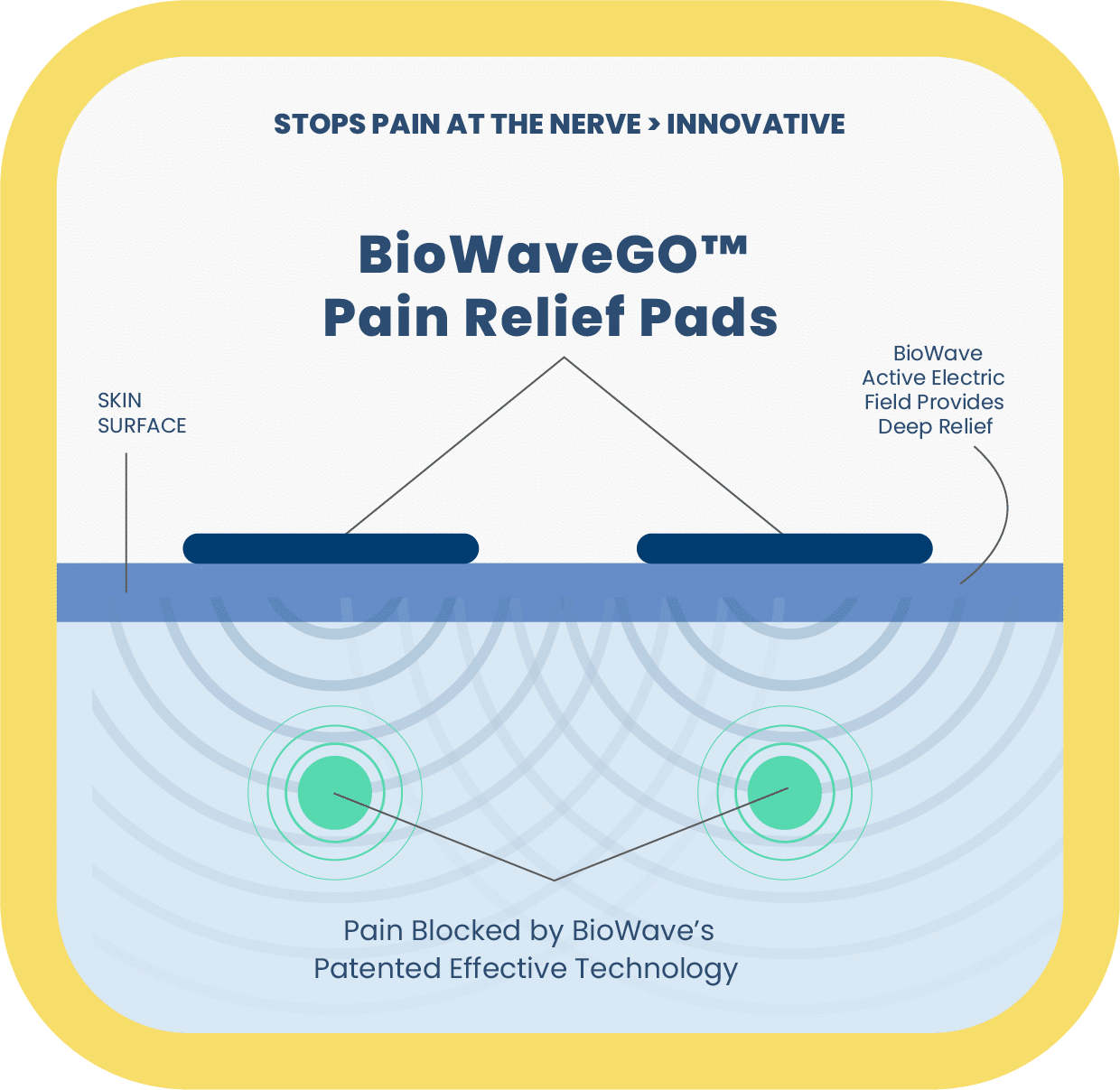TENS, or transcutaneous electrical nerve stimulation, is a form of electrical therapy. Despite widespread use across the globe, there’s not a lot of evidence to back up how effective they are. We take a look at the outdated technology to answer the question – do TENS machines actually work?
What is a TENS machine?
A TENS machine is a small, battery-operated electronic pain relief device that uses a mild electrical current.1 These devices are connected to pain relief pads that are called electrodes. These electrodes stick directly onto the skin on or over the source of pain. When switched on, the machine delivers small electrical impulses to the affected areas of the body. These signals are generally limited only to the surface of the skin.
How does a TENS machines work?
The electrical impulses released by the TENS machine are designed to reduce the pain signals as they travel through the body. Often described as a tingling sensation, these impulse stimulate the body to produce endorphins, chemicals that naturally stop pain.
These devices have dials so that users can control the strength of the impulses, increasing them if the treatment is not effective enough.

Do TENS machines actually relieve pain?
In short, we don’t know. There isn’t yet enough good-quality scientific evidence to say definitively whether or not TENS work. Clinical trials for these kinds of machines are ongoing.
It’s important to note, however, that TENS machines don’t cure pain. TENS machines simply use electrical impulse to mask pain while you use them. However, some people suffering with chronic pain prefer them over opioids because they are safer to use.
How do TENS machines differ from BioWaveGO?
There are similarities between TENS machines and BioWaveGO. For example, they are both small, portable, battery-operated devices. HOWEVER, the crucial difference between the two is that while TENs machines mask pain, BioWaveGO actually stops symptoms, blocking pain at the source for long term relief.
High frequency pain blocking technology
The revolutionary technology behind BioWaveGO’s is a high frequency, alternating current. Once you attach the pain pads to your skin – BioWaveGO’s active electric waves travel beneath the skin directly to the source of the pain. These waves block pain at the nerve, stopping pain messages from travelling through the nervous system to the brain.

Unlike TENS machines, BioWaveGO device continues to work long after it has been used. Clinical studies have proven that one treatment of 30 minutes provides pain relief for up to eight hours.
Getting to the source of pain
An easy way to understand the difference between TENS machines and BioWaveGO is to think about a nettle sting. If you get stung on the arm by a nettle, the chances are you’ll rub your arm to try and make the pain ‘better’. This isn’t actually helping the pain at all; but it is distracting you from its source – and that’s exactly what a TENS machine does. The tingling sensation masks and distracts users from their pain.
What sort of pain can benefit from BioWaveGO?
You can use BioWaveGO’ for many different kinds of pain relief. Our high-frequency, deep stimulation technology can help with pain from chronic conditions or as a result of acute pain from injuries during sports. Some of the most common applications include:
- Back pain
- Knee pain
- Arthritis pain
Whether you’re a professional sports person or someone suffering from chronic, pain, find out more about how BioWaveGO’s revolutionary pain blocking technology can help you forget about pain and get on with being you.
Sources
- NHS England: https://www.nhs.uk/conditions/transcutaneous-electrical-nerve-stimulation-tens/
- An Open‐Label Pilot Study Investigating Noninvasive High‐Frequency Peripheral Nerve Fiber Stimulation in Chronic Pain: https://onlinelibrary.wiley.com/doi/10.1111/papr.12993



